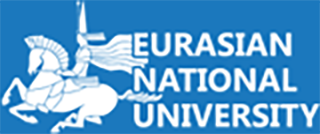Abstract
Interest in BeO ceramics as structural materials for new generation reactors, despite the fairly active research of this type of ceramics previously, is primarily due to the combination of their thermophysical, strength and mechanical properties, as well as a low neutron capture cross-section, which allows them to be considered as one of the most promising materials for the creation of new generation fuel elements. The paper defines the main factors and critical irradiation doses at which destruction of the nearsurface layer of BeO ceramics exposed to irradiation with low-energy helium ions is observed in the case of irradiation temperature variations in the range from 300 to 1000 K. During experimental work, the influence of temperature on the crystal structure during irradiation and its role in changing the rate of destruction and softening of the near-surface layer of ceramics under high-dose irradiation were revealed. A direct relationship between the change in the strength characteristics of ceramics exposed to irradiation and temperature-induced processes of volumetric deformation swelling of the damaged layer has been determined. According to the data obtained, in the case of high-temperature irradiation it is necessary to consider the role of thermal expansion leading to increased deformation distortions and acceleration of swelling processes of the crystal structure due to accelerated diffusion of point and vacancy defects in the damaged layer.
Article Type
Original Study
First Page
71
Last Page
78
Creative Commons License

This work is licensed under a Creative Commons Attribution 4.0 International License.
Recommended Citation
Kozlovskiy, Artem L.; Ryskulov, Azamat E.; Ivanov, Igor A.; Zhumakhanova, Gulnur; Popov, Anatoly; and Konuhova, Marina
(2025)
"Determination of the influence of temperature factors on the softening of the near-surface layer of BeO ceramics under high-dose irradiation with helium ions,"
Eurasian Journal of Physics and Functional Materials: Vol. 9:
No.
2, Article 2.
DOI: https://doi.org/10.69912/2616-8537.1241

